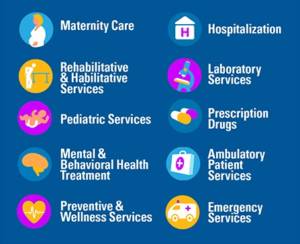Simply put, Preventative Care is any medical service that defends against health emergencies. It would include doctor visits, like annual physicals, well-woman appointments, and dental cleanings. Some medicines are preventative, such as immunizations, contraception, and allergy medications. Screenings, like skin cancer tests, tests for high cholesterol, and colonoscopies, are also effective preventative measures.

The ultimate goal of preventative care is to help people stay healthy before a problem arises or becomes unmanageable. The idea to nip diseases in the bud before they come catastrophic is not only good for your health, but it also keeps health care costs low. It also keeps people productive, enabling them to keep earning well into their senior years.
Most people don’t realize that health care costs are the No. 1 cause of bankruptcy. They also don’t know that 46% of retired people were forced into it before they were ready because of unexpected or quickly evolving healthcare problems.
Healthcare Costs are Lower with Preventative Care
Preventative Care helps lower health care costs in America by preventing diseases before they require emergency room care. Why is this a problem? Hospital care is expensive!! It makes up for 1/3 of all healthcare costs in America. The number of emergency room visits has increased, from 115 million in 2005 to 136 million in 2011. A surprising one out of every five goes to the emergency room each year.
One reason is that a lot of them use the emergency room as their primary care physician. Almost half of them, of 46.3% went because they really had no other place to go for Health Care. That is especially true for the uninsured. The cost of emergency room care for the uninsured can be extremely high. The cost gets shifted to your health insurance premiums and to Medicaid.
The other half went because their doctor sent them. Sadly, the four leading causes of death are caused by totally preventable diseases. These diseases are heart disease, cancer, chronic obstructive pulmonary disease and stroke. Heart disease and stroke are primarily cause by poor nutrition and obesity. Lung cancer, the most common type, and COPD are primarily caused by smoking. Obesity is also a risk factor for other common forms of cancer.
Even before they reach emergency room status, these chronic diseases are expensive to treat. Half of adult Americans have a chronic illness, but they are responsible for 85% of health care costs. They cost an extra $7,900 each, five times more than a healthy person.
Many patients get tired of taking so many medications or can’t afford it. When they cut back, they wind up in the emergency room with heart attacks, strokes and other complications. This is according to For a Healthier America’s 2014 article “The Impact of Chronic Diseases on Healthcare.”
The ACA Relies on Preventative Care to Cut Costs
The Affordable Care Act, or ACA, has an effective preventative care plan. It should be followed by any national health care reform plan that wants to lower costs. It requires insurance companies, Medicare, and Medicaid, to provide preventative care services for free. All 50 procedures recommended by the U.S. Preventative Services Task Force have no copay. The ACA requires that they are included as part of the 10 essential benefits.

These specific benefits include:
Maternity and Newborn Care: This is considered preventative care because it’s cheaper to provide good nutrition and alcohol/drug counseling for the mother than treat premature births and fetal alcohol syndrome. These include well-woman visits, domestic violence screening, and support for breastfeeding equipment and contraception. These are all detailed as preventative care provision.
Mental and Behavioral Health Treatment: More than 40% of the 610,000 homeless in America have untreated mental and behavioral health problems. Left untreated, they cost society more from emergency rooms, police action, and jails. For example, a homeless person is in the hospital four days longer per visit than normal, costing taxpayers an extra $2,414 per visit. When they wind up in jail, they cost taxpayers $14,480 each a year, just for overnight stays.
Services and devices to help people with injuries, disabilities, or chronic conditions: Most plans cover services and equipment to help you recover from temporary injuries, like a broken leg. The ACA requires coverage for goods and services to help you maintain a standard of living if you contract a chronic disease, like Multiple Sclerosis.
Lab Tests: These must be covered 100% if diagnostic astray are considered preventative. If you’ve already been diagnosed with a disease, your regular copays and deductibles will apply.
Pediatric Care: Dental and Vision must be covered.
Prescription Drugs: All plans listed on the exchange’s will include coverage of a least one drug in every category in the U.S. Pharmacopeia. Whatever you pay out-of-pocjet for drugs will also count toward your deductible. This is not true though for all insurance plans prior to the ACA. They also offered this at a cost.
Thus, Preventative Care should be considered an investment or personal insurance, allowing you to keep your healthcare under control before issues become major but also lowering your future costs as well las keeping your retirement as your return on investment. Take advantage of any preventative benefits that your insurance company offers!
For you and me, the choice regarding our health is simple: Either invest a relatively small amount (which may be 100% covered by insurance) in order to stay healthy, or pay a huge amount later to treat the disease that is bound to eventually hit us. Since major medical expenses can easily exceed our maximum insurance coverage, this second choice could cause financial ruin.
- Some other great tips for preventative healthcare measures you can take on your own are:
- Don’t smoke or use other tobacco products; Drink only in moderation.
- Eat a proper, balanced diet to get the correct amount of nutrients and calories daily.
- Exercise at least three days per week; Aerobic exercise will build muscle and endurance. Go for walks in the fresh air!
- See your doctor regularly for check-ups.
Take the time to educate yourself and learn more about the preventative health care benefits you can take advantage of yourself as well as those offered by insurance! You will thank yourself later by being healthier and able to live life to the fullest!

